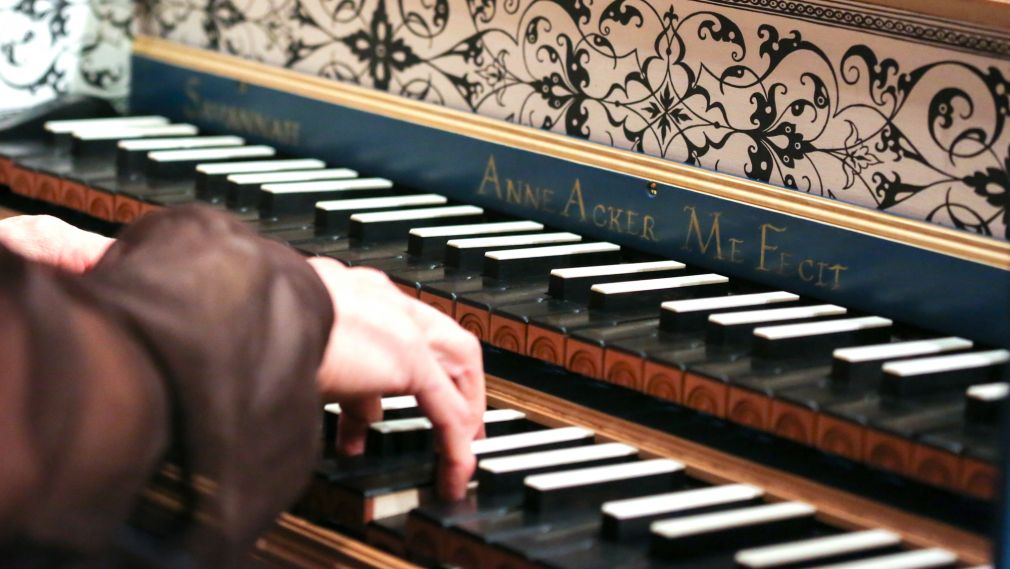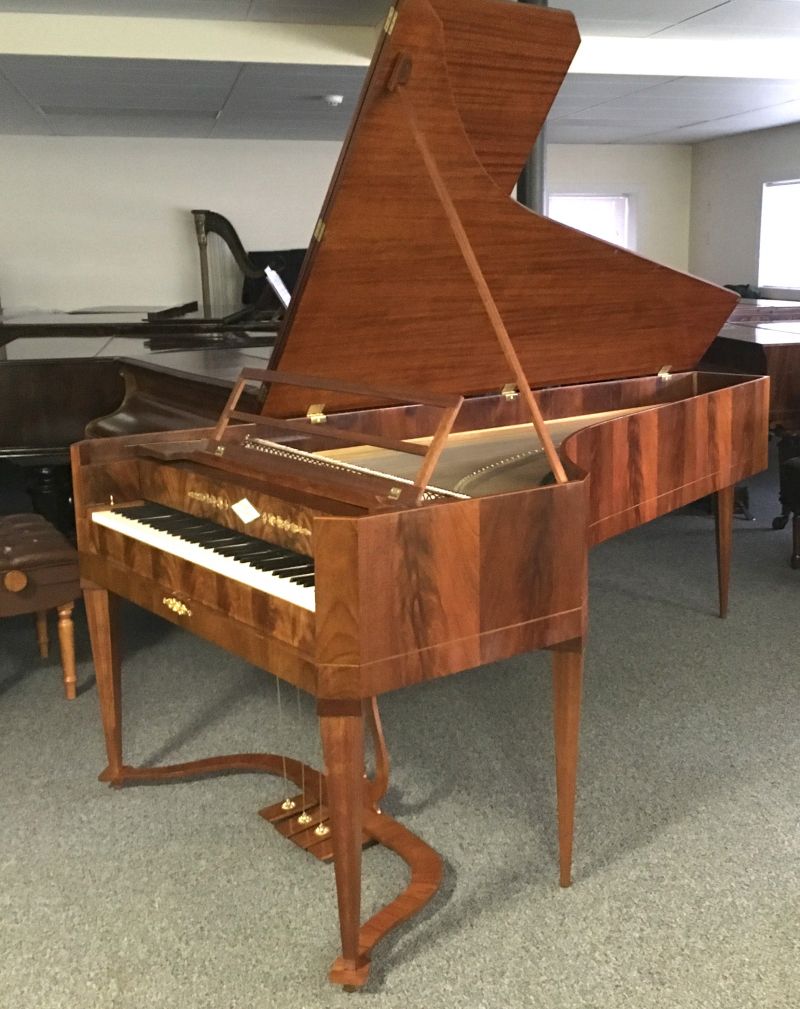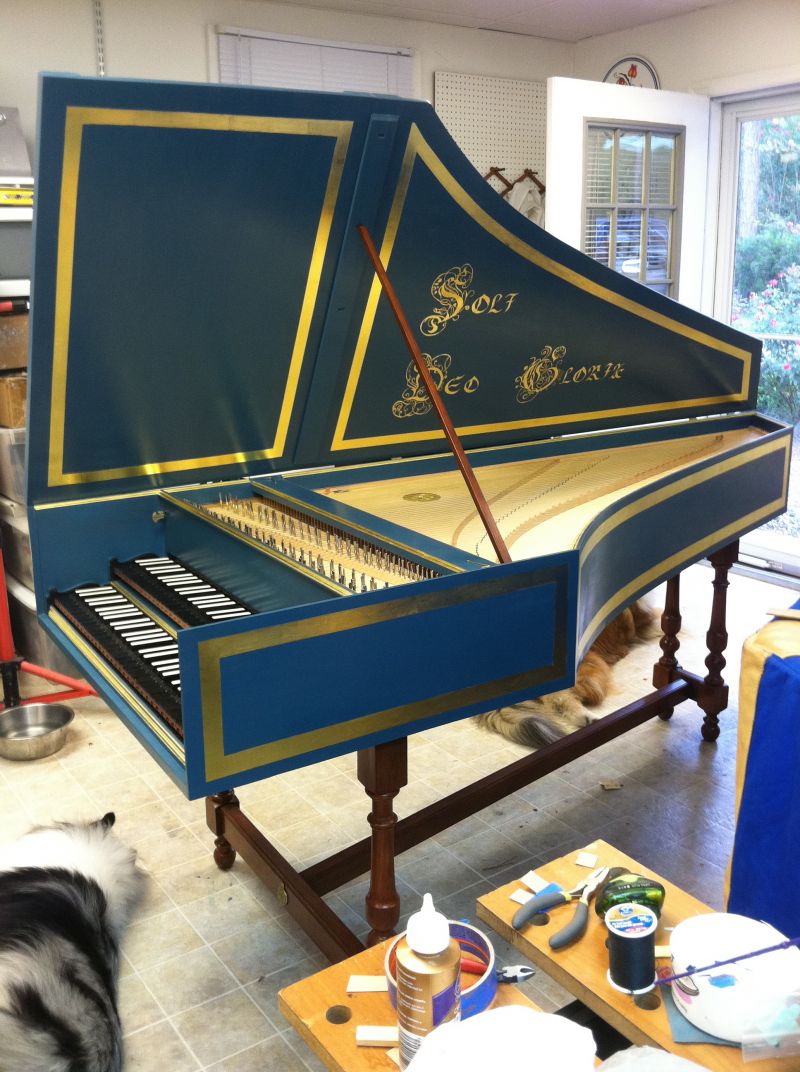Instrument Craftswoman Continues Legacy Inspired by Woman Who Made Beethoven’s Pianos

Often left off the pages of history are the incredible contributions of women throughout the ages, and few cases are demonstrated more definitively than that of Nannette Streicher, the woman who built Beethoven’s pianos. Streicher may have built pianos in the 18th century, but her legacy lives on today with the work of instrument craftswoman Anne Acker.
Streicher was a German piano maker, composer, music educator, and writer who lived from 1769 to 1833. The daughter of organ and piano maker Johann Andreas (often credited with developing the “Viennese action”), her parents recognized her rare abilities and she was working with her father in the workshop by the age of seven, building actions by age ten. She was favored over her brothers to manage the workshop and continued doing so after her father died in 1792 when she and her brother André became partners. Streicher married in 1793 moving the firm to Vienna, Austria the following year. She and her brother split into two separate companies soon after. Nannette was then sole owner, managing the workshop and designing and building pianos with the support of her husband and eventually their son. Her husband, a performer and teacher, managed much of the business and publicity end highly successfully. Their son, Johann Baptist, was brought into partnership by 1824. In 1796, Streicher was approached by Beethoven (who she had met earlier) and was asked to borrow one of her pianos for a concert in Pressburg (now Bratislava) stating that her pianos were the finest available. With the development of larger concert halls and more forceful virtuosic playing by Beethoven, Steibelt, and others, by 1805 she began to design what became by 1809, the most powerful instruments available, yet still capable of delicacy and great nuance, favored over all other Viennese makers.
While Streicher lived only a few decades more, outliving Beethoven by five years, her legacy was revitalized by another keyboard maker, Margaret Hood, who began building harpsichords in the 1960s. Recognizing the lack of replicas of early pianos, and particularly fascinated by Nannette Streicher, she visited European and American collections to research the instrument, making plans and taking extensive photographs. After her return in 1976, she began specializing in reproductions of Streicher pianos in her Platteville, Wisconsin workshop. By the middle of the 1980s, Hood was well-known for her reproductions and became a friend and mentor to Anne Acker, the third generation of instrument makers ultimately inspired by Streicher’s legacy.

After obtaining degrees in mathematics and computer science, Acker made the decision to leave her professional field and now builds, restores, and decorates harpsichords, clavichords, and fortepianos, professionally.
What inspired your decision to start crafting and repairing harpsichords?
During those same years, when I was mostly home raising my children, I belonged to a group of talented amateurs and professional players who got together socially once a month to play for each other. At one home, there was a harpsichord, and I sat down to play Bach's “Italian Concerto.” The owner, Jack, said to me, ‘Anne, you should take the harpsichord home.’ After running into him at various stores, he kept telling me to come to get it, so eventually, I did. It needed some work, so I asked if he minded if I tried to fix it. With his approval, it all began. I loved working on it and appeared to have a knack for three-dimensional mechanics, as well as the touch and ear for the musical aspects. I already had skills as a craftsperson and woodworker as I had been doing some furniture restoration since I was in my early teens at the encouragement of my parents. Word got out, and I found that this was something I could do at home with the children and still give them sufficient supervision and attention. My first workshop was half of the kids’ playroom in the basement, and I worked while the children played in the other half.
How did you come to meet Ms. Hood?
I was a young mother who had left the computer research world to concentrate on raising my two young children, so I had returned to my avocation, the piano. I found that playing, accompanying, and teaching worked better with child-rearing and made me much happier. I have been obsessed with keyboard instruments since I could stand. My parents started lessons for me at four years old because I wanted to learn so badly. By high school, I had become frustrated with the inability of the modern piano, wonderful as it is, to achieve something I could sense was missing in playing baroque and early classical music, particularly Scarlatti and Mozart. At a piano teacher's meeting, I met a gentleman who had studied with Malcolm Bilson, the pioneering fortepianist from Cornell, who brought a copy of a Stein fortepiano to demonstrate Mozart. I knew instantly this was part of what I had been seeking, and I was hooked. I met Margaret Hood through him, visiting her, and then the two of us were part of a debut concert for one of her Streicher piano copies, playing the Schubert F minor Fantasy. Margaret, and I became friends throughout the remainder of her life. She was a helpful mentor and inspiration.
Do you have any advice for other women looking to break into instrument manufacturing?
Be sure you love the instrument and the music. Passion and hard work are key to being successful. Find a mentor, and don't be afraid to reach out and ask questions. I have found almost all the people in this area are helpful and giving of advice and methods. Also, start investing in good tools when you can, but invest gradually and wisely. The better the tools, the better and more efficient your work is. Realize that you don't need a full wood or metalworking shop right off the bat, if ever, as they are expensive and take a lot of space. Get tools you will use a lot, but also cultivate a relationship with people with professional shops. Thus far, I have easily found people who really enjoy helping make the unusual wood or metal bits I need that are beyond my capability at home, or they can do it faster and better and hence cheaper than I can. The cost is far less than purchasing expensive equipment, let alone owning or renting the considerable space needed for it.
What is the impact of Ms. Streicher and Ms. Hood on both your work and the critical place their work has on music and the music industry?
Nannette Streicher has been an inspiration to me from the moment I first heard of her. She managed a family, an important business, and designed and refined the instruments, at a time when even women who worked in various industries were faceless in the background, names forgotten to history. Yes, women have always worked in the piano industry, mostly cottage industry work, some taking over managing a deceased husband's workshop, but typically had to marry the foreman and use his name for the work to be taken seriously. Margaret also managed work, family, and creativity. She was also an artist and horsewoman with a brilliant mind and a beautiful soul. How could you not be inspired? As to impact and place in music and the industry, Nannette brought the early Viennese piano design and the few first concert pianists such as Mozart into the 19th century and was making the first vital adaptations for a world with larger performance spaces and virtuoso sometimes almost violent players, requiring more volume and durability. Her instruments are the bridge to the next level, of early Bosendorfers and on. Margaret was one of the first and, to this day, very few in the world making replicas of the early 19th century Streicher pianos, letting us know this important link to the instruments and sound and touch known by Beethoven and Schubert and others.
What projects should our readers hope to see soon?
I'm currently building and decorating a double manual Flemish harpsichord for a church in South Carolina, and next am building a custom small harpsichord to be decorated beautifully in a way I have yet to design for a private client in California. Restorations and repairs fit in around commissions. In between those, I try to work on instruments I own for my collection. These are available for research and recordings and sometimes rentals. In the queue are restorations of various antique pianos and harpsichords.

For more information on Acker and her instruments, including Acker’s line of AMD harpsicords, please visit https://www.annesharpsichords.com/. Acker also collaborates on a line of harpsichord kits from renowned, The Paris Workshop, which can be viewed at http://www.theparisworkshop.com/.